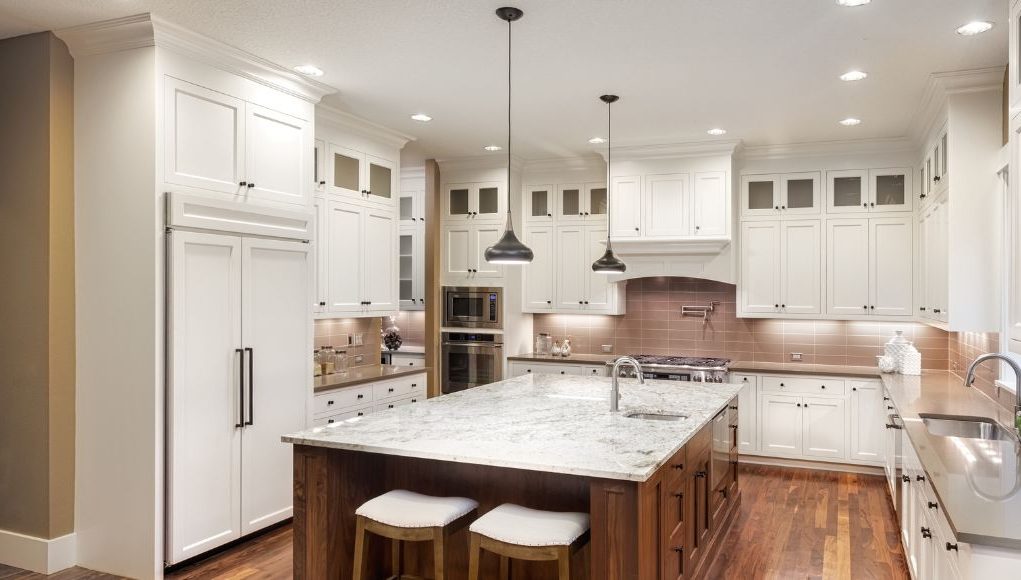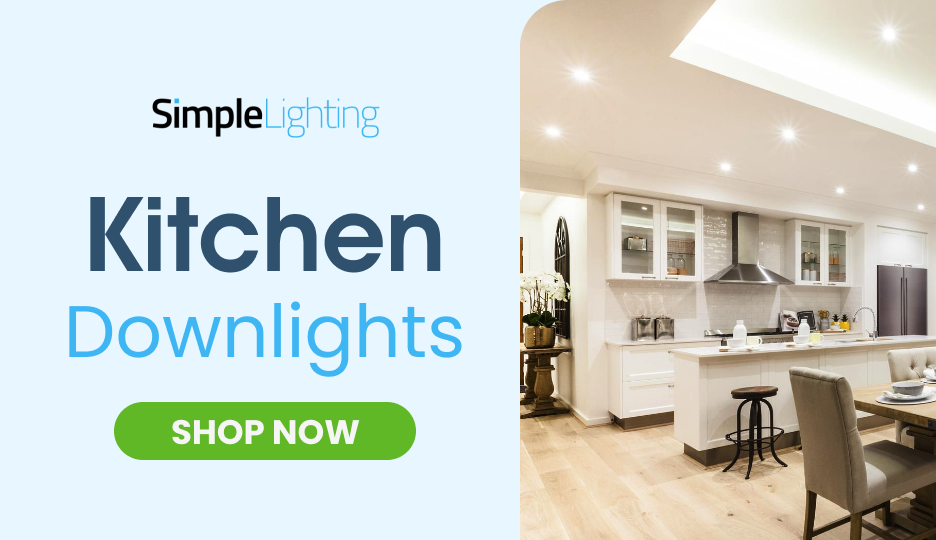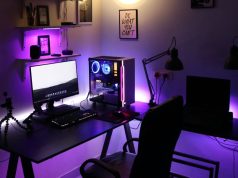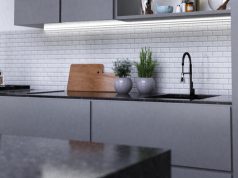Your kitchen is the heart of your home. It’s where culinary masterpieces (or disasters) are born, midnight snacks are raided (secretly, of course), and coffee is worshipped. But more than these, the kitchen is where a lot of things happen at home. From prepping for school and work to initiating important talks—it’s the central hub for your home.
That’s why it’s crucial to have proper kitchen lighting. Too dim, and you’re cutting onions in the dark—well, hopefully it’s just onions you’ll cut. Too bright, and your Sunday roast suddenly feels like it’s under interrogation. Sadly, a lot of homes in the UK operate in the “As long as it’s bright enough, it’s alright” mentality, which is not wrong, but we also can’t say it’s totally alright!
In this guide, we’ll break down how to layer your kitchen lighting for both function and flair, creating a space that works and wows. Get your notes ready, cos we’ll be spilling some of the best kitchen lighting tips you’ll surely love.
The Role of Layered Kitchen Lighting
Since we’re in the kitchen, think of your lighting as an egg omelette. Sure, you can cook an omelette with just beaten eggs, and nothing more. But if you added a dash of salt, ground pepper, and green onions to it, it will be an explosion of flavours in your mouth. A complete 180 degrees from the stale omelette with just eggs. Layered lighting is similar.
You can certainly use just one type of lighting in the kitchen. But what do you think would happen if you combined task, ambient, and accent lighting? That’s right, the same thing with the omelette.
These are the vital kitchen lighting “ingredients:”
- Task lighting: Bright, focused light for tasks such as chopping, stirring, and serving.
- Ambient lighting: Your lighting baseline. The overall glow that makes the room feel inviting.
- Accent lighting: Like under-cabinet lighting, adds flair to your countertops and highlights your fancy backsplash.
We won’t promise a Michelin-star restaurant improvement, but get this trio right, and your kitchen will at least feel like a really cosy diner.
Why Layer?
Layered lighting lets you control the mood and function of your kitchen. Whether you’re meal-prepping like a boss or dimming the lights for a late-night vibe, your kitchen will seamlessly adapt without losing its functionality.
Plus, it’s a more affordable option to add style to your kitchen without committing to a complete remodel.
Task Lighting for Food Prep and Cooking
Ever tried slicing carrots under a ceiling light that’s three feet behind you? Dark and dangerous. Enter: task lighting, the unsung hero of the kitchen. With task lighting, you can see clearly, avoid injuries, and execute your signature dishes with confidence.
Where You Need Task Lighting:
- Over countertops (especially where you prep)
- Above the sink (washing dishes is already a chore, why make it more detestable with bad lighting?)
- Over the stove or cooktop (of course)
- Inside pantry closets or near wall-mounted shelves (those expiration dates won’t read themselves)
Great Task Lighting Options:
- Pendant lights are a classic choice. Perfect over kitchen islands or peninsulas. Pro tip: Go for adjustable-height pendants so you can tweak the light’s focus; choose shades that diffuse light to avoid harsh glare (this is not an interrogation room).
- Recessed downlights: Need focused brightness without visual clutter? Done.
- LED strip lights under cabinets for a continuous, uniform glow.
More thoughts: Task lighting should be bright but not blinding. If your current lighting makes you squint or cast a shadow over your own cutting board, it’s time for an upgrade.
Ambient Lighting Options for Overall Brightness
Ambient light sets the overall tone of the space and fills in the gaps left by natural light or task lighting. It’s your kitchen’s “general glow.”
Some Ambient Lighting Ideas:
- Ceiling-mounted fixtures: Make sure to consider your ceiling height when selecting your lights. Flush mounts or semi-flush mounts are ideal for lower ceilings.
- Recessed lighting: Subtle, clean, and highly functional. This is what you’d call the “bread and butter” in standard lighting setups. Spread them evenly for consistent coverage.
- Wall sconces: Don’t sleep on this! Wall sconces can add a cosy glow to open-plan kitchens or awkward corners.
- Natural light: If you have windows (lucky you!), make sure to maximise the natural light that spills from them into your kitchen. Nothing beats natural after all.
Pro tip: A well-lit kitchen actually feels bigger, so make sure there aren’t any unwanted shadows when you’re working. Also, pair your ambient lights with dimmers for ultimate control.
Under-Cabinet Lighting Ideas and Benefits
These lights are tucked neatly under—you guessed it—cabinets and illuminate countertops for both function and flair. Under-cabinet lights are like supporting actors; they’re subtle but essential. They don’t take the spotlight (lighting pun intended), but instead just supplement the overall picture.
Going for a late-night sandwich? No need to turn on all the kitchen lights. Need precision lighting for food prepping? Just turn these bad boys on, and you’re golden.
Why Under-Cabinet Lights Rock:
- Overhead cabinets equal dark shadows over countertops. Under-cabinet lights eliminate them.
- Food prep is brighter, hence they’re easier (and prettier).
- They add drama and dimension to your kitchen design.
- Creates a soft glow, making sipping wine more relaxing (even when you should be scrubbing those pans).
- They double as soft night lighting—late-night fridge raids don’t need to be blinding.
- LED under-cabinet lights are very energy-efficient.
Under Cabinet Lighting Types:
- LED strip lights: Flexible, long-lasting, and have dimmable and colour-changing options. Offers uniform continuous lighting without the “gaps”.
- Puck lights: Small circular fixtures, either hardwired or battery-operated. Great for targeted illumination.
- Linear light bars: Ideal for modern kitchens or minimalist aesthetics since they’re sleek. Some models allow connecting multiple fixtures for continuous and even lighting.
Some “Smart” Tips:
- Install your under-cabinet lights toward the front edge of the cabinet, not the back. This reduces glare on glossy countertops and maximises coverage where you actually work.
- Want to DIY? Look for plug-and-play LED strip kits. You’ll get that designer look without calling an electrician.
Design Tips
We’re not interior designers, but let us be a little bit bold and give you some design-forward tips to keep your space both functional and fantastic.
1. Mix Finishes With Intention
Be intentional with the design and style of the fixture you’re getting. Maybe a pink pendant light won’t fit in a white-and-wood interior? Just make sure there’s a rhythm to the finish of the fixtures you’re installing. Mix and match your lights and interior elements to achieve a balanced look.
2. Vary Fixture Sizes
Remember: Not everything in your kitchen needs to stand out. The secret to properly layering your lights is creating contrasts. Large fixtures are typically used for making a statement, while smaller lights help complement this. If everything is of the same size, nothing will stand out.
3. Embrace Dimmers
Cooking, dining, cleaning—each moment needs its lighting vibe. Install dimmers wherever you can. It adds mood control and saves energy.
4. Match the Light to the Task
Warm white light (2700–3000K) is best suited for ambient and accent lighting to create that cosy vibe. For kitchen tasks, cool white (4000–5000K) keeps colours accurate and eyes alert. No more cutting your fingers.
5. Consider Smart Lighting
The future is already today. Wi-Fi-enabled LED strips or app-controlled lights are more affordable than ever. Set routines, change colours, or dim with your voice. Lights are now more than just illumination.
Wrapping It Up
You don’t need a lot of lights to have a well-lit kitchen. What you need are the right lights at the right places. Layering task, ambient, and under-cabinet lighting not only makes your kitchen more functional but transforms it into a space you and your family actually want to be in.
Task lighting keeps your food prep game strong, ambient lighting sets the mood, and under-cabinet lights add that extra sparkle. Play with styles, experiment with dimmers, and don’t be afraid to let your personality shine. After all, you’ll be staying there more now that you have better lights.
You can learn how to improve the lights in other parts of your home in Everything You Need to Know About Lighting Every Room of Your Home.















